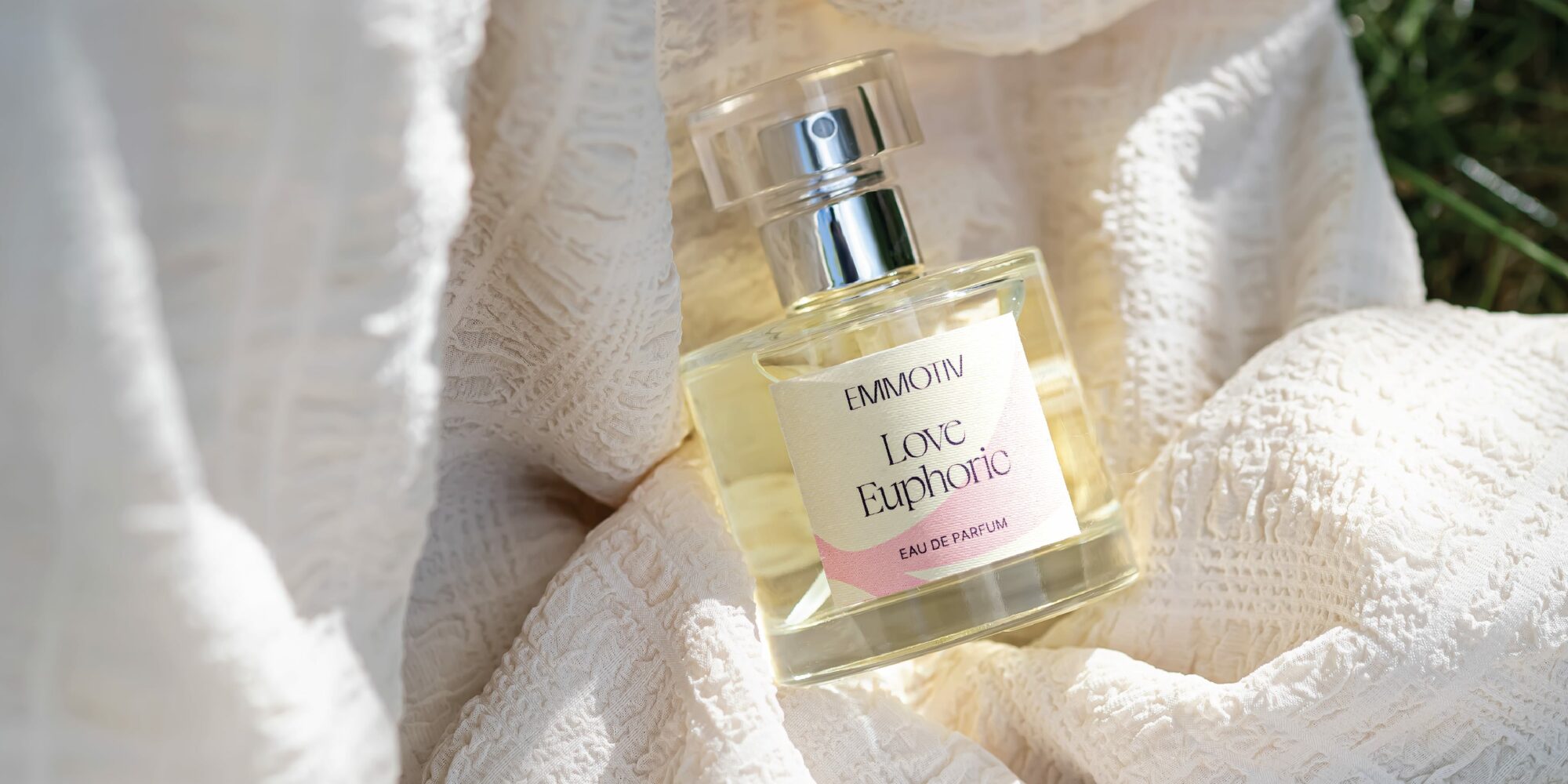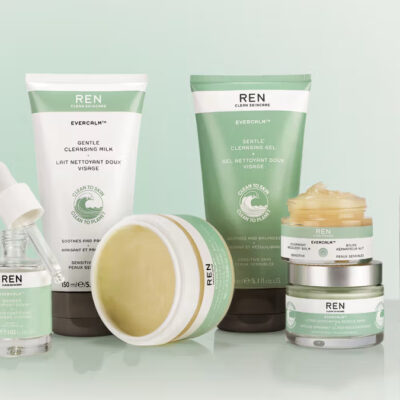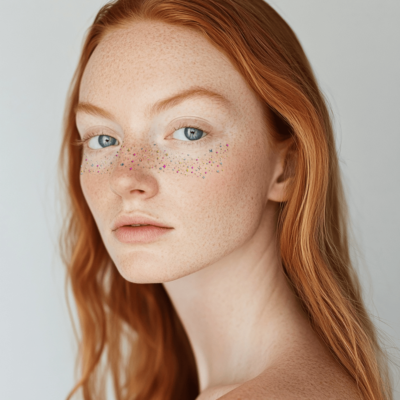
In The Post-iOS 14 Update Era, What Acquisition Strategies Work For Brands Just Getting Off The Ground?
Last year, Cristina Bagozzi, formerly VP and head of the owned brand business at clean beauty retailer Follain, launched fragrance brand Emmotiv with $25,000 from her personal savings. In its first couple of months, outreach to her network and local press mentions jumpstarted sales. Now, she’s exploring further strategies to accelerate Emmotiv’s sales, including hiring a press agency, partnering with like-minded collaborators and paying for social media advertising.
“I am fully self-funded, so my investments come from my income and will be modest to start. This makes finding efficiency much more critical since I’m trying to protect profitability,” says Bagozzi. “The calculus is different when tapping into personal savings, so I would be super interested to know how others are approaching this.”
To know how other leaders of cash-strapped brands just getting off the ground—those roughly 2 years old or younger without large external capital infusions—are building their customer bases, for this edition of our ongoing series posing questions relevant to indie beauty, we asked 16 brand founders and executives the following question from Bagozzi: What customer acquisition tactics have been most and least efficient for you?
- Adrienne Arieff Co-Founder and CMO, 1Saves20
In the post-iOS 14 update world, businesses, including 1Saves20, have faced some challenges with data privacy and tracking, particularly on Facebook, which has made it more difficult to track and target users with precision. With that, I’m only focusing on Amazon marketing and influencer seeding and not as much on digital advertising as it’s less efficient.
To adapt to this new reality, we’ve been experimenting with a range of tactics and methods. For example, we put a heavy emphasis on organic social media content on Instagram and TikTok as well as influencer marketing because those channels are less reliant on tracking and data.
In terms of budget, customer acquisition is a long-term process that requires ongoing investment. Businesses would do well to allocate budget tied to their specific goals and audience.
Because 1Saves20 has a younger demographic, we’re investing more heavily in influencer marketing. A business targeting an older demographic may want to invest more in email marketing and SEO. With a constantly changing landscape, being nimble and willing to experiment—even with a limited budget—is a big plus.
- Shaun O’Hollaren Co-Founder, Strip Makeup
Most Efficient: With paid media buying through Meta with Facebook and Instagram we have seen some of the best results for acquiring new customers. Customers are open to learn about the product, a new brand and purchase with the right content and messaging being shown.
At Strip Makeup, we are constantly evaluating the cost to acquire new customers through paid social and scaling our budget as we find winning creative that has a good return on spend while still keeping in mind the lifecycle of acquiring that customer.
The ability to have enough creative has been the biggest challenge so that we can quickly pull out any non-performers and put enough budget behind successful ones as a startup trying to win in a competitive category.
Some of the best creative has come from UGC-style videos, where we are able to leverage a partnership with an influencer by not only creating the content, but also in putting that to work as a paid ad while also using the influencers following to create look-a-like audiences to reach new customers that match our demo.
The difficult thing with Meta advertising has been testing with a high enough budget in order to get enough data for the brand to make educated decisions, but overall has been the most successful in acquiring new customers with a high intent to buy at a reasonable cost.
The second-best channel has also been with media buying, but through affiliates. At Strip Makeup, we have loved working with SquareDance, a new platform where we can vet and work directly with great media buyers in the beauty space.
There are many affiliates who are much better at acquiring new customers than we are on certain channels, including TikTok. We have had to identify what we don’t know as well as others and have been able to acquire great new customers here.
The cost to acquire has been very high, so it is all about adjusting your offers to customers while making sure your communication with them is perfected in order to keep them educated and hopefully loyal to the brand long term.
We have had to consistently evaluate each partnership as we go, making sure it works on a short-term and long-term basis, that we are getting the right customers to the brand, and that the brand ethos and communication is consistent throughout. Working with news publications in this way has also been extremely profitable as we are able to bring awareness and traffic to the business in a significant way.
Least Efficient: Paid influencer collaborations are becoming least efficient for us. What we mean by that is direct payment for a post on the product, especially a one-time promotion. We have had to really evaluate this channel as a new brand working to get awareness.
It certainly is still a great high-level awareness campaign for brands to run, but we prefer now to work with creators on a longer term basis, really making sure they like, organically use and fully understand the brand before doing long term deals together. This typically includes more than one piece of content and paid ad rights as well as whitelisting with the creator to maximize their and our efforts.
- Aradhna Juneja CEO, Palma de Salus
We at Palma de Salus have found that there is no single acquisition approach that works best, but it's actually more important that a brand has a consistent well-rounded omnichannel approach, which should include weekly photo/content and short-form videos, especially TikTok and Instagram Reels, micro-influencer seeding, paid ads and SEO.
One thing we recommend for new brands based on our experience is to be as hands-on with each channel as possible, especially in the early stages, as it helps to maintain the brand image and to build an authentic trusting community.
If you can't afford an agency, seek out recommended freelancers that you feel an immediate connection with as they will help you tell your story in your own words. Our favorite tools are TikTok, Pinterest, Google Ads, Instagram, YouTube Shorts, Klaviyo and direct connections with influencers.
- Ryan Babenzien Founder, Jolie
One of the most successful part of our marketing mix is our ability to drive a conversation with our community around shower water and how it impacts our skin, hair and well-being. We, of course, have a paid strategy now, although, when we launched 17 months ago, we didn't have any budget for that, so we had to figure out a scrappy way to that.
Seeding to creators was and continues to be core to our marketing strategy. In our first year, we had 5,000 pieces of UGC talking about how effective Jolie was in helping a variety of issues people have, many caused by their shower water.
This is a ton of essentially organic content that allows us to spend on paid more efficiently because people are discovering Jolie through people they follow first and then through our paid channels. Learning from a trusted source you follow is always better than getting hit with an ad first.
- Shay Paresh Founder and CEO, Shayde Beauty
Since I bootstrapped Shayde Beauty, a skincare line that prioritizes the needs of melanin-rich skin, from the get-go, I haven't been able to put the money behind digital marketing quite like I'd like.
As a woman of color, I’m acutely aware that female founders of color only receive 1.2% of the overall venture dollars invested in the U.S. Instead of focusing my energy fighting for funding to fuel a massive marketing budget, I decided to get scrappy. I asked myself: How can I get the word out there organically, authentically and without having to spend a lot of money?
After trying a few techniques, I landed on the most old-school approach there is, meeting customers IRL. There is something about an in-person, hands-on experience that the post-COVID consumer is craving.
During my first year in business, I would go to art shows and set up a table filled with product samples and business cards in the hopes of getting people to sign up for our email marketing list. I’d cold-call boutiques around NYC to see if they’d let me do a pop-up shop for a few hours. I’d even go to Washington Square Park once a week with a bag full of sample jars and business cards to hand out to strangers.
What arose out of a necessity turned into my secret weapon. In fact, this boots-on-the-ground approach has been instrumental in growing my brand’s reach and gaining me some of the most dedicated customers around. Is it the most efficient way to market? No, but it’s been so valuable to carve out opportunities to meet potential customers face-to-face.
- Jennifer de Klaver Co-Founder, Figaro Apothecary
As a new brand, instead of throwing money into the online advertising abyss with little return, our strategy for customer acquisition at this stage is organic and revolves around building authentic relationships.
To achieve this, we rely on our personal and professional network (LinkedIn and regular old email outreach!) to secure partnerships, influencer collaborations and retail opportunities.
Since the sensorial aspect is so integral to our brand, we lean into intimate gatherings for press and influencers that showcase our brand's pillars such as an evening in co-founder’s garden with a string quartet plus a meditation or reiki healing session featuring our products. To educate our customers further about our botanicals and attributes, we rely on our resident expert holistic doctor, Dr. June Chin.
Additionally, we recognize the importance of key retail partnerships that share our values. We are excited that we will be launching with Ssense, a prestigious luxury online brand, in late spring. This partnership allows us to reach a like-minded discerning customer and establish our brand as a luxury wellness line. We are also excited to share an upcoming partnership with a luxury hotel chain, which will further amplify our brand's reach from an experiential aspect.
As we continue to grow our customer base, we will begin to shift some of the budget into paid media, but will do so cautiously and only when we have enough data and can ensure that there is a true ROI.
- Sandra Statz Co-Founder, A.P. Chem
Like most DTC brands, finding the right balance between investing in paid digital versus boosting organic social content was tricky. It’s no secret that paid digital has become very expensive and it takes several months to test out content before you start to see conversion, let alone ROI.
With boosted content, you invest far less, have a much shorter learning curve and see much quicker conversion. You’re also acquiring new customers while gaining loyalty among your existing ones. In retrospect, we could have waited versus investing in paid digital out the gate.
Doing an occasional flash sale can be great. You get a quick boost in sales. Our margins are solid, so we still see a nice return. There’s pressure, however, to offer promotions during holidays and key selling seasons, especially when virtually everyone is doing them and offering steep discounts.
In my experience as a new brand, it’s more important to protect your brand image and not come across as too promotional, so you have to make the tough choice sometimes to not participate.
Until our upcoming launch when we’ll have samples and trial kits, we lean into word of mouth among social media influencers and KOLs, but unpaid.
Luckily, we have some great connections who love our formulas, so we gift them products to promote and get into the hands of celebrities and makeup artists who more often than not, not only endorse us, but also come back and purchase.
- Lizzie Waley Co-Founder, Sundae
The changing privacy landscape has forced us to take a different approach, moving from a predominantly performance marketing to a brand-led and top-of-funnel approach. We’ve been focusing on great creative, great partnerships and, where possible, activation moments to create talkability and shareability across PR and social media.
Adopting a brand-first approach and creating memorable experiences has helped us to not only acquire new customers, but stay relevant with our existing customers.
What hasn’t worked? Performance marketing. Well, not as effectively as it used to. Decreased supply, increased demand and the decay of the cookie has meant that we’ve pulled back our spend across channels like Meta where the ROAS isn’t as strong anymore. Instead, we’re focusing spend on owned channels like SEO, our socials, optimizing our website and our EDM community.
- Samantha Kent Founder, The Cleanest Lab
The most effective customer acquisition method from my experience has been sampling and word of mouth. When you know you have a good product you just need to get it into other people’s hands. From there, they will start to bring it up to their friends and word about your product will spread.
The least effective customer acquisition tactic from my experience was investing into digital ads and paying consultants. Consultants often claim to be experts at everything. They pitch dreamy sales trajectories to you.
I have learned that often money and time are wasted with little results. I’ve found it’s essential to invest in a strong internal team that you can trust and that works hard.
We tend to hear stories of brands once they have become super successful and are under the impression that brands take off overnight. When you are self-funded and small you have the luxury of time. Take that time to refining and save money on your long-term strategy.
For sampling, we take time to carefully choose women of different ages that are influential in different aspects of life, businesswomen, mothers, influencers, young women starting out in their careers, etc. We send them our products and ask for honest feedback.
We don’t compensate them off the bat to post on social media or promote it in any way. We want them to genuinely love the product and want to tell their friends, family and co-workers about it. We do this through our team’s networks and by reaching out through social media and email.
We have also had a great partnership with Ipsy that has given us the ability to not only get our product in the hands of thousands of beauty lovers but also allowed us to generate awareness amongst like-minded brands.
- Matt Jacobs Co-Founder, Pedestrian Project
We're still in the early days of our marketing efforts, but we've seen initial success leveraging UGC video content across paid social channels including both Instagram and TikTok.
One key for us to accurately measure effectiveness in a post-iOS 14.5 world has been ensuring that we have appropriate UTM parameters and/or third-party tracking links in place to cross-check against native pixel-based reporting within the social channels.
UTMs are most frequently used for analyzing campaign performance in Google Analytics, which is how we use them at Pedestrian Project. There are five standard UTM values: campaign, source, medium, term and content.
- Elyse Kantrowitz VP, Plant Beauty Distillery
In the post-iOS 14 update world, it has gotten harder and harder to see measurable results from digital advertising. Especially for new brands, it is crucial to know you’re reaching the right audience and not wasting valuable marketing dollars.
We’ve found the most success by acquiring customers organically. If you have great content that can differentiate you and ties to your brand ethos—be it educational, entertaining, humorous or just visually stunning— people will want to learn more and share it.
We’ve gotten a lot of traction from user-generated content and videos that show how our products are unique. We’ve developed entirely new types of products (all of our skincare is water form), and you need to see someone using the product to really understand what the experience is like.
Sampling is also a terrific way to get customers. The true test for keeping customers is having people use and love the product.
We’ve done in-store demos and sampled at large events. When you can see, smell and feel a skincare product, it is so much more powerful than seeing an image of it on a screen.
- Amy Welsman Founder, Paume
Paume was born in the grow-at-all-cost era of 2021. Fueled by an early fundraise, we had a successful launch and scored some quick victories, but we also spent money freely on fancy agencies and costly consultants, thinking they could help unlock our potential. Most underdelivered.
In 2023, faced with a very different economic and fundraising environment, and with headwinds in the digital marketing space, we decided to rethink our approach. I wanted to break from the cycle of depending on outside capital, become self-sufficient and put the company on a path to profitable growth.
After careful consideration, we cut outside contractors, betting on ourselves to develop new strategies and get creative in order to efficiently acquire customers and grow the business. We felt we could do it better. Plus, our employees are all shareholders and simply care more about our shared success.
First, we brought our digital marketing efforts in-house. I enrolled in a course that taught Facebook advertising and audience targeting, and how to build a proper sales pipeline with smart and targeted creative content. I quickly discovered that we had been far too broad in our approach, which diluted our messaging and our budgets.
Second, we focused on a single hero product, our Moisturizing Antibacterial Hand Gel, and targeted our efforts on a specific, but very deep segment of the market—new moms. We refined our messaging to speak directly to this audience and built a sales pipeline suited to their needs with our hero product front and center.
We also built a separate landing page that echoed the messaging of the ads we were running. The landing page only offered bundles and included cart upsells with our other products to help the customer achieve free shipping.
Apple’s iOS changes have made it more costly for everyone to acquire customers, so growing average order value (AOV) is essential to profitable growth. Bundling and upselling are key to increasing it. Within weeks, we were seeing results, so we leaned in hard to this new strategy.
The results speak for themselves: We have increased our AOV by 20%, more than double our ROAs, and decreased our CPA by $25. And we think it's scalable.
So far, we have quadrupled our daily spend on Facebook these last three months without any decline in our ROAs. Now that we are acquiring customers at a more efficient rate, we have the time and resources to use other tools like email, SMS and organic social to introduce our customers to our other products and build LTV and retention.
For beauty and skincare brands with a lot of products, it's tempting to want to sell everything to everyone all at once, but we learned that, by betting on ourselves, focusing on a hero product and targeting a very specific but deep segment of the market, we were able to see marked improvement across all our digital marketing efforts and put our business on a more sustainable growth trajectory.
- Kesha Smith Sales and Education Manager, Clover by Clove + Hallow
We receive the best response from consumers that have viewed our social media pages and have interacted with videos from our founder Sarah Biggers-Stewart. She has maintained a heavy social media presence since she started her first brand.
Our customers relate to her transparency in her posts on work/life balance, motherhood, illness, healthy journey, skin issues and everything real that women experience. They trust her honesty and feel comfortable shopping with a brand owned by a woman that they view as being just like them.
There was a time that we were launching a new product and experimenting with a new idea. Instead of hiring paid models for the photoshoot, we posted on local sites and brought in real local women of different ethnicities, walks of life and age.
The women signed consent to use their images and, in exchange received free headshots, free products, a tour of our corporate offices and in-house lab, snacks and drinks as well as a meet and greet the founder of the brand. It was a wonderful experience for us all, and we acquired customers that loved seeing real women that resemble themselves, their neighbor, sister, mother, etc. We saw an immediate influx in sales when that campaign launched.
Another tactic that we have used and witnessed a spike in revenue from is to include a free deluxe-sized sample of a newly launched product with any online order over a certain price threshold. That afforded the customer the opportunity to “try before they buy.”
With that same campaign, we sent a free bottle to a number of influencers to use for 30 days in exchange for before and after pics featuring day 1, day 14, and day 30. This showed true results and reviews by real people. We sold out of that particular product, and it was backordered consistently for several weeks. Video demos, real before-and-after pics and “try before you buy” are a few tactics that have proven successful for our brand.
- Hollie Harvison Palmer CEO, Sun Coast
The most efficient customer acquisition tactics are those that focus on building relationships with potential customers. This includes providing valuable content, engaging with people on social media and attending industry events.
By building relationships, I have been able to create trust and credibility, which has led to more people becoming customers.
The least efficient customer acquisition tactics are those that focus on paid advertising. While paid advertising can be effective, it can also be very expensive. I am still trying to find a winning customer acquisition strategy.
The best advice I can offer based on my company's challenges is to not double down on marketing strategies that aren't paying off. Instead, learn something from every campaign you run, even if all you learn is what not to do. Evolve your strategy with every trial, error and success.
- Christina Garcia Co-Founder, Covey
At Covey, we are focused on building our “flock,” and we do that through digital and IRL experiences. With digital, we’ve had success building content that is educational entertainment for TikTok and Reels. When we see a piece of content build momentum, we amplify it on paid social to drive customer acquisition.
IRL brand moments are focused on building deep connections with our community, pairing something experiential that aligns with our brand values like fitness or self-care and authentically integrate our products without being a product-only focused experience.
- Sandi Ateser Co-Founder and CEO, Monika Blunder Beauty
As with anything, it is best to focus on what you have control of. Technology is changing daily, so it is essential to be flexible and pivot to ensure that we have an omnichannel marketing strategy.
When iOS 14 changes occurred, we were only six months into the launch of our company, so we were able to minimize disruption. In addition, to display ads for acquisition and retargeting, we leverage both PR and social media, which are significant elements of our marketing strategy and provide a decent ROI.
If you have a question you’d like Beauty Independent to ask beauty entrepreneurs and executives, please send it to editor@beautyindependent.com.






Leave a Reply
You must be logged in to post a comment.